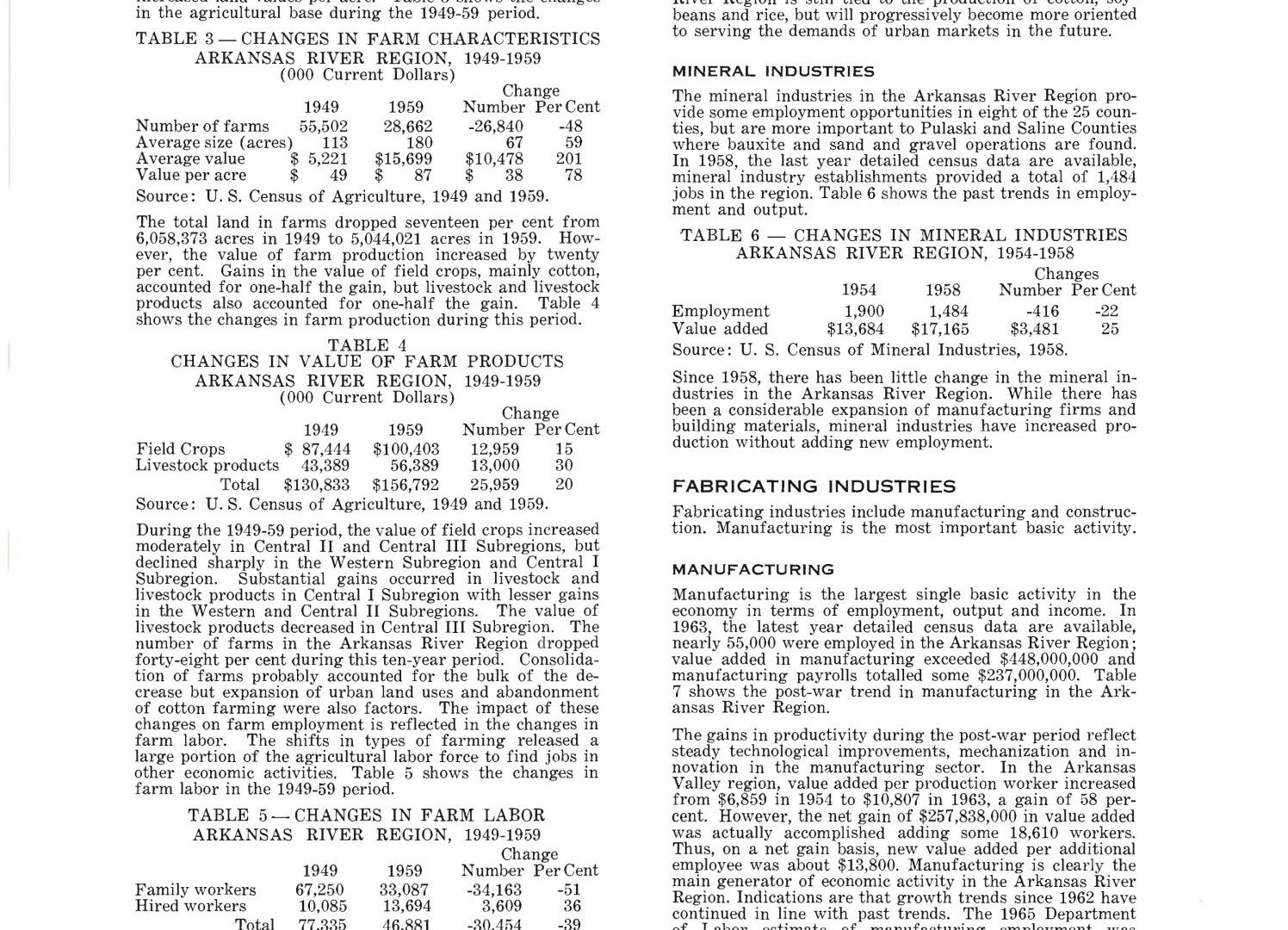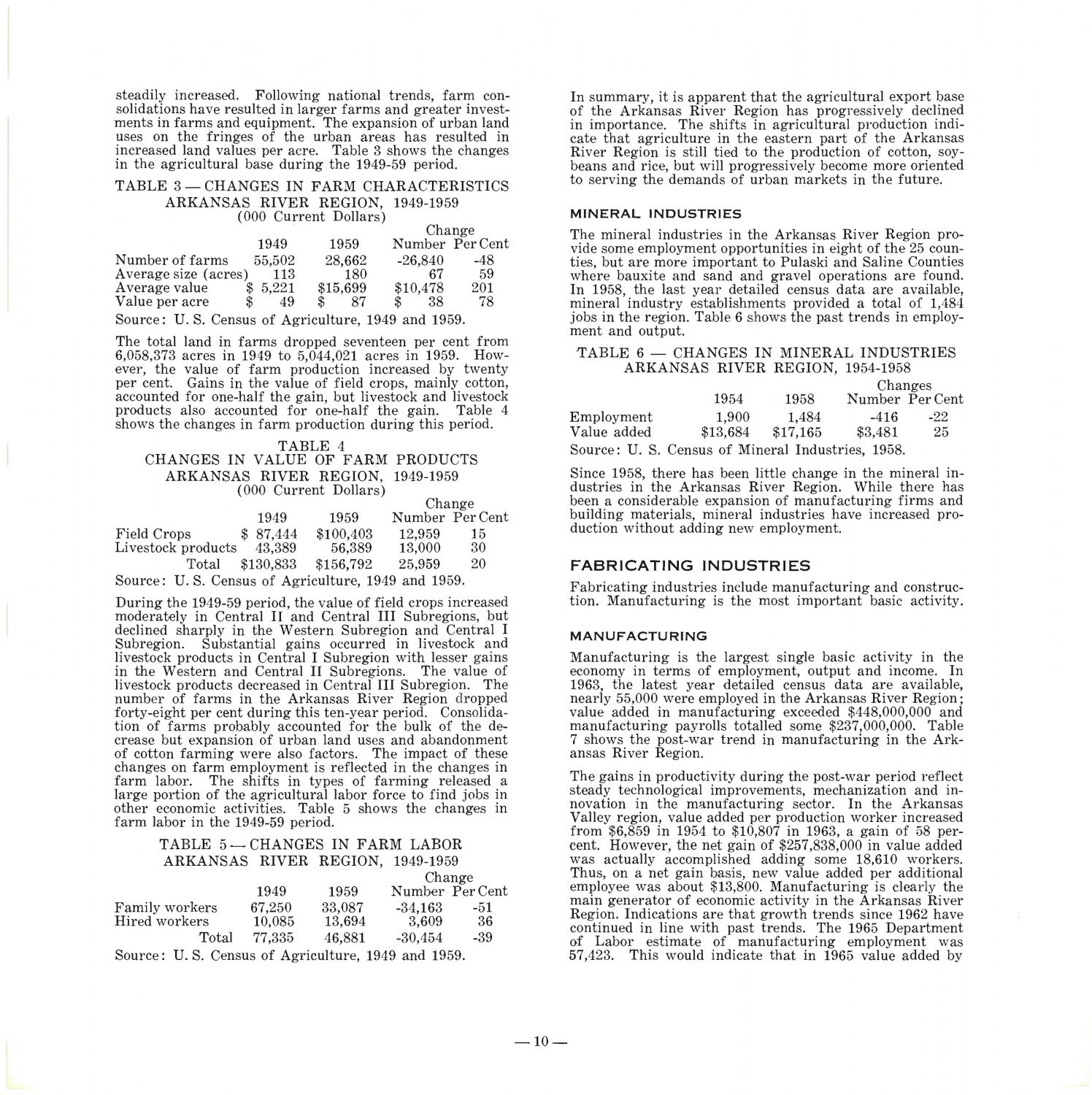Changes in Agriculture (mid-20th Century)
Introduction
Agriculture has always been critical to the Arkansas economy. In the Arkansas Territory (1819 – 1836), over 90% of the Arkansas population worked on the land as farmers or farm workers. When Arkansas was admitted to the Union, agriculture continued to dominate the state’s economy. Although over time mechanization (use of machines and technology), urbanization (growth of cities), and the emergence of multiple other sectors of the economy contributed to the decreasing impact of agriculture on the US and Arkansas economies, in the early 21st century, around 45% of Arkansans still live in rural areas. However, while in the past nearly all residents of rural areas were engaged in agriculture, today many of them commute to work in towns and cities or are employed in other sectors of the economy. Despite that, agriculture is still Arkansas’ largest industry.
For the first 150 years of Arkansas history, not much changed in how people cultivated land and run farms. Although certain inventions had an important impact on agriculture in the late 18th (1700s) and in the 19th (1800s) centuries (e.g., cotton gin, cotton harvester, grain elevator, etc.), agricultural workers used the same basic tools and followed the same farming practices, especially on small farms. That changed rapidly and dramatically in the mid-20th century (1900s). According to the Encyclopedia of Arkansas, “In 1940 [in Arkansas], tenants or sharecroppers cultivated more than sixty percent of the land, and more than ninety percent of farmers used horses or mules as draft animals. By 1964, the statistical importance of tenant-sharecroppers, and the number of horses and mules, had been reduced to the point that federal officials no longer collected data on them.” With the advancement of technology and population growth, fewer farms were run just to feed farming families. Farms became bigger, more industrialized, and more business-oriented.
Activity Questions
In this activity, you will explore some changes in Arkansas agriculture in the mid-20th century through the lens of statistics (numerical data).
- Examine statistical data in Table 3 and a short summary under the table. How did farms change in the Arkansas River Region between 1949 and 1959?
- Examine statistical data in Table 4 and a short summary under the table. How did the value of farm products change in the Arkansas River Region between 1949 and 1959?
- Examine statistical data in Table 5 and a short summary under the table. How did farm labor change in the Arkansas River Region between 1949 and 1959?
- Write a short summary of changes in agriculture in the Arkansas River Region between 1949 and 1959 based on these three tables. How did agriculture change in Arkansas in only 10 years?
- What do the data in the three tables tell us about trends in agriculture in the mid-20th century?
Primary Sources
To learn more about the primary sources featured in the activities above, click the following links:
Arkansas Social Studies Standards
Arkansas History, Grades 7 – 8
- Strand: Geography
- Content Standard 2: Students will analyze ways the geography of Arkansas influenced the development of the state
- G.2.AH.7-8.2 Analyze relationships between the geography of Arkansas and economic development over time (e.g., tourism, agriculture)
- Strand: History
- Content Standard 7: Students will examine the impact of historical events and people on the development of Arkansas
- H.7.AH.7-8.1: Evaluate ways that historical events in Arkansas were shaped by circumstances in time and place
- H.7.AH.7-8.9 Examine social and cultural transformations in Arkansas
Arkansas History, Grades 9 – 12
- Strand: Era 5: World War II Through the Civil Rights Era 1941-1967
- Content Standard 5: Students will analyze factors that influenced the perspectives of Arkansans from World War II through the Civil Rights Era.
- Era5.5.AH.9-12.3 Analyze the economic development of Arkansas post-World War II
US History, Grades 9 – 12
- Strand: Era 9: Post-war United States 1945 to Early 1970s
- Content Standard 6: Students will analyze social, economic, and political changes in the United States between 1945 and 1970.
- Era9.6.USH.3 Analyze the technological transformation of post-World War II America
Key Terms
Downloadable Guides and Handouts
We encourage K-12 educators to use History Alive: Virtually! in a way that will best match their classroom needs. The “Exercise” handout includes a complete exercise as featured on this website, the “Primary Sources” handout includes only primary sources used in the exercise, and the “Questions” handout includes analytical questions from the exercise but is editable and can be easily changed to best match students’ needs.
Changes in Agriculture (mid-20th Century) – Exercises


